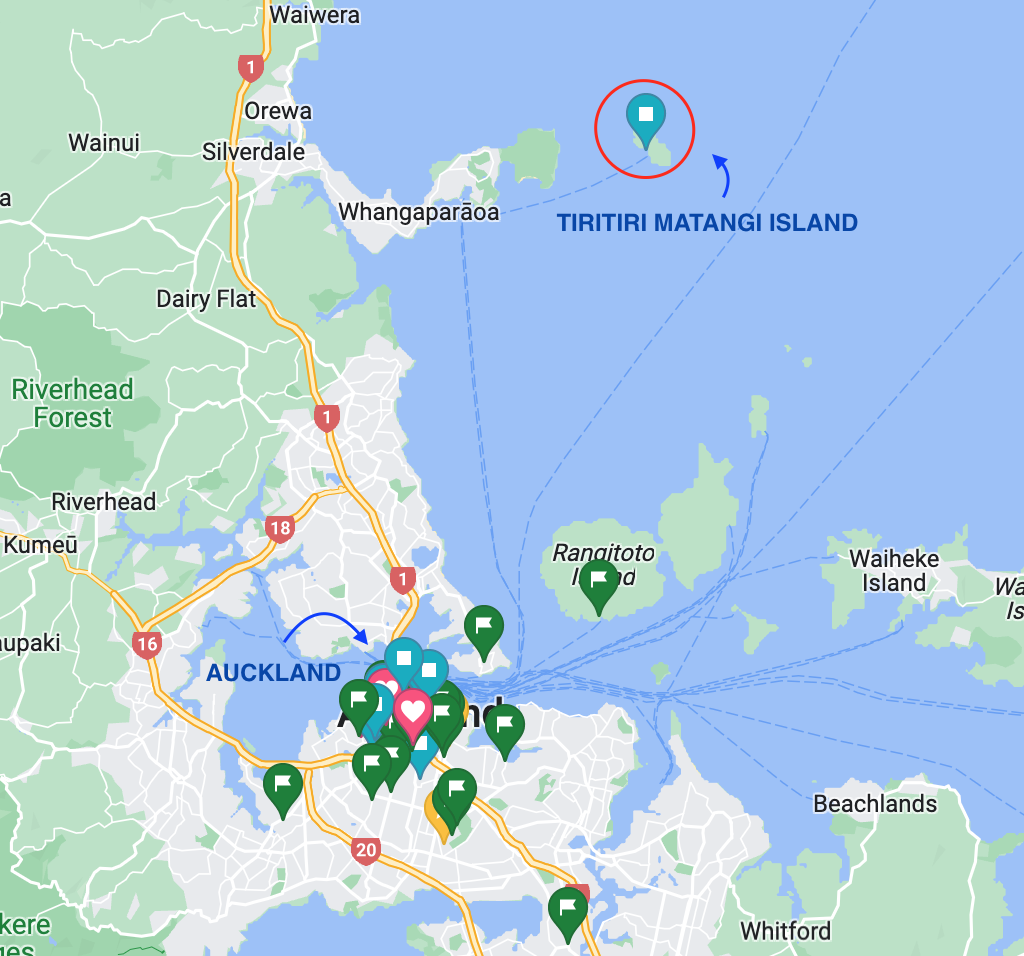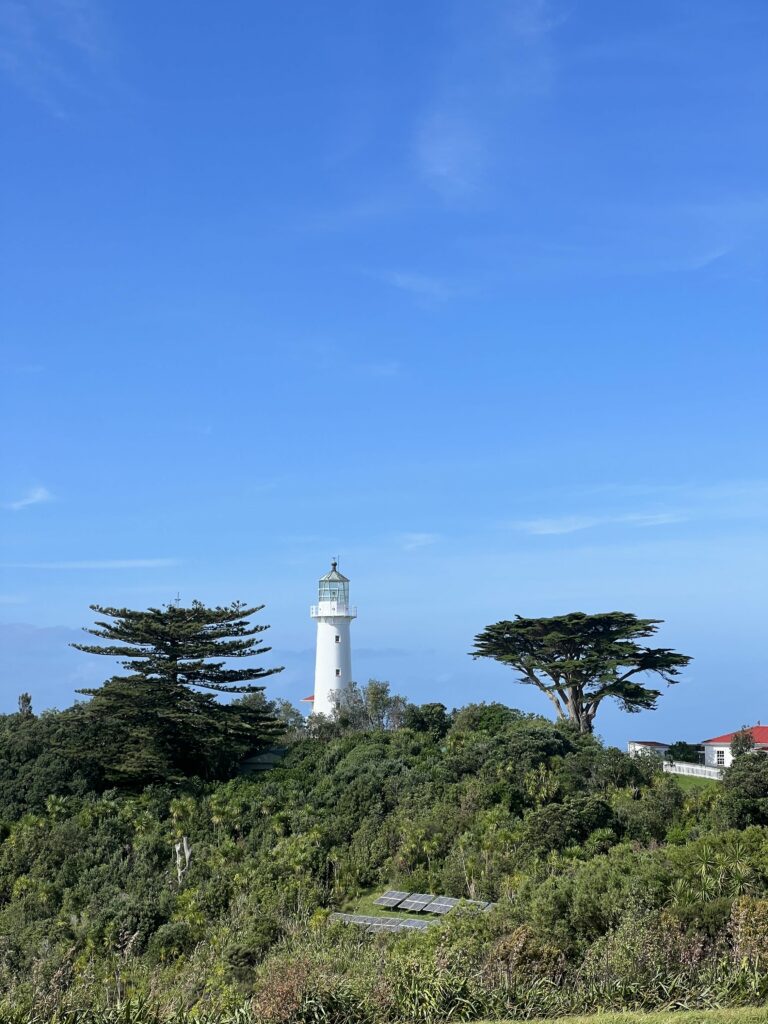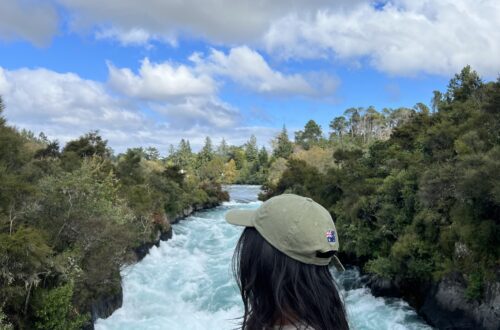
Tiritiri Matangi Day Trip: New Zealand Bird Island Sanctuary
Visit the one place with an abundance of native New Zealand plants and rare birds that you can’t see anywhere else! Tiritiri Matangi is a hidden gem off the coast of Auckland that makes a great day trip. Immerse yourself in nature, where you’ll hear birdsong with every step and untouched wilderness that will make you feel like you’re exploring a newly discovered island. Even if you’re not a birdwatcher or nature fanatic, everyone can benefit from visiting this open sanctuary that helps preserve New Zealand’s incredible biodiversity. So, what is Tiritiri Matangi?
What is Tiritiri Matangi Island?

Tiritiri Matangi Island is a pest-free wildlife sanctuary three kilometers northwest of Auckland. It started as a farm that eventually was reforested with native plants, creating the perfect breeding ground for different biodiversity levels. As the forest expands vertically, it provides protection for vulnerable species that exist in small populations in New Zealand. As a result, conservationists introduced rare New Zealand birds to the island, which serves as an important refuge for native birds that are susceptible to predators.
Aside from being a pest-free wildlife sanctuary, Tiritiri Matangi also serves as an education and advocacy tool for future conservation projects. It’s mainly operated by passionate volunteers.
What is so special about Tiritiri Matangi Island?
Tiritiri Matangi is one of the most successful endangered bird conservation projects in the world. It successfully brought back more than ten rare and endangered bird species that were deemed long-lost in the past. Accordingly, not only are its conservation efforts special, but what makes it special is that it is an open sanctuary.
Visitors can walk through the island and see rare New Zealand birds firsthand, which you would otherwise not see in any other part of the country. You can also stay overnight on this sanctuary island and increase your chances of seeing even rarer birds, like the Kiwi bird. The birds are usually more active in the evening when most visitors leave the island.
How do you get to Tiritiri Matangi?

There is only one way to get to Tiritiri Matangi: By boat. You can either take your own boat or take a ferry from Auckland.
Private Boat
You can land a private boat at Hobbs Beach on the island’s west side, where you can swim and snorkel.
Ferry Service
A ferry service is available every day to take from Auckland to Tiritiri Matangi. You can take the ferry from Auckland’s Viaduct Harbor or Gulf Harbor. However, the ferry only runs once a day, meaning there is only one time to go to the island and one time to return to Auckland.
The ferry starts at Auckland’s Viaduct Harbor, then picks up passengers from Gulf Harbor, then arrives at Tiritiri Matangi island. To return to Auckland, the ferry departs the island, drops off passengers at Gulf Harbor, and then ends at Viaduct Harbor.
Tickets are required to board the ferry, which you can purchase either in person at the Explore Booking Kiosk at Viaduct Harbor or online on their website. I recommend purchasing tickets beforehand online for ease of mind. You can also purchase guided walks along with your ferry ticket, which is $10 NZD for adults and $2.50 NZD for children.
Prices:
- Adult (16+): $95 NZD
- Child (5-15): $50 NZD
- Children Under 5: Free
Ferry Time Table:
| Departs Viaduct Harbor | Departs Gulf Harbor | Arrives Tiritiri Matangi Island | Departs Tiritiri Matangi Island | Arrives Gulf Harbor | Arrives Viaduct Harbor | |
|---|---|---|---|---|---|---|
| Wednesday – Friday | 9:00 AM | 9:55 AM | 10:20 AM | 2:40 PM | 3:05 PM | 4:00 PM |
| Saturday, Sunday, & Public Holidays | 8:30 AM | 9:25 AM | 9:50 AM | 3:30 PM | 3:55 PM | 5:20 PM |
NOTE: Because the ferry only departs once from Auckland and once from Tiritiri Matangi Island, please make sure you are ON TIME for the ferry. Just like a cruise ship, the ferry will not wait for you to make it back. If you’re late, you either won’t be able to visit the island, or you will have to stay the night on the island, depending on which ferry you miss. It would suck to spend extra money that is preventable!
Once you get to the island, there are a variety of activities to do!
What can you do at Tiritiri Matangi?
You can do both wildlife and non-wildlife activities at Tiritirit Matangi island, although the main attraction is seeing wildlife. But first, here’s a map of the island:

You can also download it at this link: https://www.tiritirimatangi.org.nz/tiritiri-matangi-map-download/.
Wildlife Activities
The main wildlife activity on the island is hiking/walking around and wildlife watching. There are several trails that visitors can take, unguided or guided. There are six walks available for visitors, each at different lengths and difficulties. The walks are:
- Wattle Track
- Hobbs Beach Track
- Kawerau Track
- Ngāti Paoa Track, Northeast Bay Track & East Coast Track
- Ridge Road
- 3 Hour Loop
On these walks, you can birdwatch, creature watch, and/or identify different plants. There are printable sheets for different animals or plants you can take with you on your walks available online. Alternatively, doing a guided walk or tour on the island is an informational and effective way to get the most value out of your time. The guided walk guides are volunteers who are very knowledgeable about the flora, fauna, and wildlife on the island. They point out different things on the walk—many of which are hard to see or identify otherwise.
Near the coast and on the beaches, you’ll find tide pools where you can see small sea creatures playing about. You could even spot some eagle rays at Hobbs Beach if it’s shallow tide.
You can penguin watch in the evening if you stay overnight or see them during the day during their nesting season in winter and spring. The nesting penguins are in designated boxes near the tracks, giving you opportunities to see them up close.
Near the visitor center is a small farm that often has bird showings every day, showcasing rare birds that are either in the works of being introduced or rehabilitated. There are also some wildlife events that happen in the back of the visitor center that vary between the seasons.
Non-Wildlife Activities


The most popular and famous landmark on the island is the Tiritiri lighthouse, which is the oldest working lighthouse in New Zealand. In 1864, England shipped the lighthouse to New Zealand, and it is still working to this day. Around the lighthouse, you’ll also find a watchtower and some small cottages. In the visitor center, you can also look at maritime artifacts and history.
All visitors are encouraged to bring food to the island, as no food is sold at Tiritirit Matangi. You can only purchase beverages. I think this is to help mitigate littering and keep pests away. Therefore, bring sandwiches and easy, portable food and have a picnic in the sanctuary. All food must be in closed or resealable containers, and all rubbish must go back on the ferry with you.
Keen on swimming or enjoying the beach? There are plenty of spots you can take a dip, including Hobbs Beach, Northeast Bay, or Wooded Island. You can snorkel around or even snorkel to a small island a couple hundred meters away.
How long does it take to walk around Tiritiri Matangi?
The island itself is quite small, and walking around Tiritiri Matangi takes at most 3 hours. As mentioned previously, there are several routes you can walk, each with differing lengths. Depending on how fast you walk and if you stop to observe wildlife, it may take you less or more time. However, the average person can walk around the circumference of Tiritiri Matangi in 3 hours.
My Experience at Tiritiri Matangi
Arriving at the Harbor
I visited Tiritiri Matangi in late April 2023. I took the ferry from Viaduct Harbor to the island. The ferry leaves from the Explore Booking Kiosk at Viaduct Harbor. It takes roughly 5 minutes to walk there from the closest transportation stop (Britomart Transport Center). The ferry service operator tells all passengers to arrive at the kiosk at least 20 minutes prior to boarding.
I made it to the kiosk about 10 minutes early, but most people were already on the boat at that time. They really do not mess around with tardiness—for good reason. I was a little stressed trying to find the kiosk, as there is no large sign that you can pinpoint its location from afar.
Once I arrived at the kiosk, I checked in with the worker, who then gave me my ferry ticket. The ferry entrance is right next to the kiosk on the left—convenient! There are multiple levels to the ferry, and I opted for the top deck for nice views of the bay and fresh air. The ferry departs slowly at first, and once it exits the wake zone, it speeds up considerably. At a certain point, it got way too winy on top, and I made my way to the inside lower deck.
Taking the Ferry
While you are on the ferry, there is someone narrating in the overhead speaker about the history of the island. They also tell you all you need to know about visiting the island. As mentioned previously, the island does not sell food. However, you can buy food and drinks on the ferry as a last-time opportunity before you embark onto the island.
The ferry has great views of Auckland and surrounding neighborhoods. On a nice day, the water is sky blue, and the sun isn’t too intense. You arrive at the island after an hour and twenty minutes, which goes by pretty fast! I suggest bringing a book (if you can read on a moving boat) or headphones/earbuds to listen to a podcast if you want to busy yourself. It’s also great to just people-watch and stare out the window, enjoying the scenery.
Arriving to the Island


The ferry docks at a very long pier that extends into the island. Once you walk to the end of the pier connecting to the island, volunteers speak to the entire visiting crowd that day. You also get the option to have a cart bring your bags to the visitor center if you don’t want to carry them on your walk. If you booked a guided tour, you group up in the same area before heading off.
Guided Tour


I booked a guided tour because I thought that it would make my experience better—I personally don’t know anything about birdwatching or New Zealand wildlife. Having a knowledge guide point out specific birds or plants was incredibly helpful and helped me get so much more out of my visit to Tiritiri Matangi Island. The tour lasted longer than its projected time because we stopped and watched wildlife many times along the route.
I believe our group did three tracks: Wattle Track, Kawerau Track, and Ridge Road. We started around 10:45 AM and ended at the visitor center around 1 PM. So the tour was roughly a little more than 2 hours. On the track, my group saw so many rare birds, and the most incredible part about the island was the birdsongs.
Everywhere you walk, you are surrounded by singing birds, which is such an amazing experience. There are also incredible viewpoints where you can see the famous lighthouse, as well as sweeping views of the ocean. I chatted with lots of people on my tour, which is great for solo travelers. Everyone is really nice and eager to learn more about the sanctuary.
Exploring Solo

After taking a lunch break, we had the rest of the time to explore the island on our own, which was so fun! The paths are well-kept, and it feels like you have the entire place to yourself. Since the ferry leaves at 2:40 PM, the volunteers reiterated that we need to be back at the wharf at least by 2:30 PM. So, after an hour of solo exploring, I headed back to the wharf and got on the ferry to return to Auckland. We actually had a whole family almost miss the ferry… I’m surprised they were kind enough to wait, haha.
The ferry back was peaceful and scenic. We returned to Viaduct Harbor around 4 PM. A great day!
What to Bring and Wear to Tiritiri Matangi Island
You want to be prepared for a trip to an island that has little resources for purchase. That means bring food and water for yourself. Make sure to pack sun protection, like sunscreen and a hat. If the weather is unpredictable, bring a light windbreaker and wear layers so that you are prepared in case the weather changes. Good walking shoes are a must-wear to the island since it can be quite hilly. If you’re an avid birdwatcher, bring binoculars and a journal. Obviously, bring your cameras!
What is the best time of year to visit Tiritiri Matangi?
You can visit Tiritiri Matangi any time of the year, and it will be good. However, they say spring is the best time to visit because the weather is mild, the flowers bloom, and the birds start mating! The island was extra beautiful at that time. However, in the summer, you’ll see specific flowers bloom, and the winter offers nesting penguins around the island.
Is Tiritiri Matangi worth visiting?

Yes! I don’t birdwatch as a hobby. However, I enjoy nature and cool projects, and I enjoyed my time at the bird sanctuary. Tiritiri Matangi is a unique and special conservation effort I don’t think I’ll get to experience anywhere else in the world. The island is covered in fauna, providing a comfortable environment to walk around in. I loved, loved, loved hearing all the birds sing and exploring the island as if I were on an adventure in a book. The ferry price isn’t cheap, however, but I think it’s worth the money for the experience and also for supporting essential environmental projects.
Do I think it’s a necessary activity to do if you’re strapped for time in Auckland? No. But it’s a great place to visit if you’re looking for something new to do or if you’re keen on birds, animals, and nature. If you’re looking for must-do activities in Auckland, check out this list of fifteen things activities you can do to make the most out of your trip.
To Tiritiri Matangi!
I didn’t know what to expect from an open sanctuary island, but after visiting, I can say that it was an educational and unique experience. I definitely would not have had the opportunity if I hadn’t stayed in Auckland as long as I did, but I’m so glad I went. This is one of those attractions that not even locals have been to, so it’s a really cool and unique experience. Not only do you get a scenic boat ride, but also you learn so much about the incredible biodiversity in New Zealand and cool ecological efforts. This is definitely worth your money and time. Happy travels!
Relevant Reads
15 Things to Do in Auckland: Make the Most Out of Your Trip





